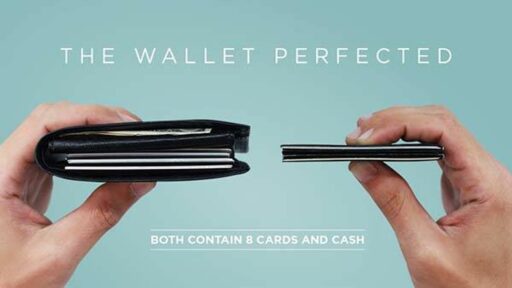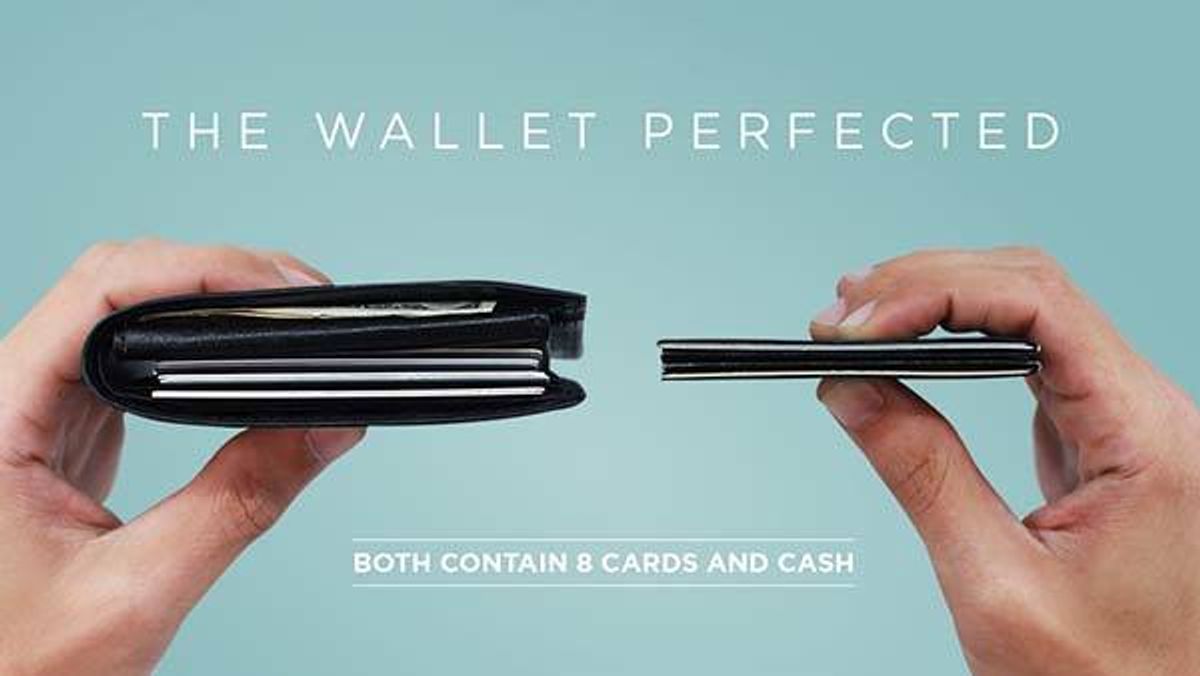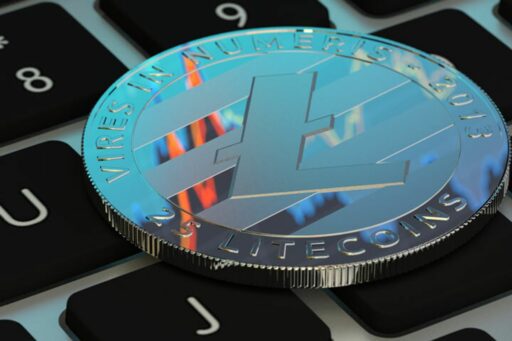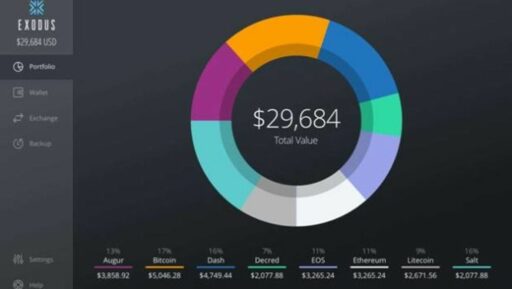In the dynamic realm of cryptocurrency, effectively managing and securing digital assets is paramount. This comprehensive review delves into the intricacies of crypto wallets, offering guidance on selecting the most suitable wallet for your needs. From understanding the basics to exploring different types and implementing security measures, this article is a treasure trove of information for both novices and seasoned crypto enthusiasts. Let’s embark on a journey to navigate the world of crypto wallets, ensuring your digital treasures are well-protected and accessible.
Key Takeaways
- Crypto wallets are essential for the secure management of digital currencies, with various types catering to different needs.
- Understanding the difference between hot and cold wallets, as well as custodial and non-custodial options, is crucial for effective asset management.
- Security features such as two-factor authentication, backup solutions, and regular updates are vital for protecting your digital assets.
- When choosing a wallet, assess the balance between security and convenience, and consider compatibility with different cryptocurrencies, as well as transaction fees.
- Stay informed and practice safe wallet management by following best practices, avoiding common pitfalls, and continually seeking knowledge in the evolving crypto landscape.
Understanding the Basics of Crypto Wallets

Key Components of Crypto Wallets
At the heart of every crypto wallet lie three fundamental elements: the Public Key, the Private Key, and the Seed Phrase. The Public Key, also known as your wallet address, is used to receive cryptocurrencies. It can be shared without risk as it only allows the deposit of funds. In contrast, the Private Key is akin to the password to your digital vault; it must remain confidential as it authorizes transactions and grants access to your funds.
The Seed Phrase, often a series of 12 to 24 words, acts as a backup mechanism. It’s imperative to keep it secure and private, as anyone with access to it can potentially restore your wallet and access your assets.
Understanding these components is essential for anyone looking to engage with cryptocurrencies safely and effectively. Here’s a quick overview:
- Public Key: Your wallet’s address for receiving funds.
- Private Key: The encrypted key that authorizes transactions.
- Seed Phrase: A recovery phrase to regain access to your wallet.
The Role of Public and Private Keys
In the realm of cryptocurrency, the security and management of digital assets hinge on the understanding and use of public and private keys. Public keys serve as your wallet’s address, allowing others to send cryptocurrency to you. They can be shared openly without risking the security of your assets and are derived from your private key through a complex mathematical function, making it nearly impossible to reverse-engineer the private key.
Conversely, private keys are akin to the password to your digital vault. They must be kept secret as they authorize transactions and grant access to your wallet’s funds. A private key can appear as a binary code, a hexadecimal string, a QR code, or a mnemonic phrase.
The interplay between public and private keys ensures that while your wallet can receive funds from anyone at any time, only you can authorize the movement of those funds.
Understanding this cryptographic duo is not just about keeping your assets secure—it’s about maintaining control. Here’s a quick comparison:
- Public Key: Shareable, serves as your wallet’s address, derived from the private key.
- Private Key: Confidential, authorizes transactions, can be represented in various forms.
Custodial vs. Non-Custodial Wallets
When entering the world of cryptocurrencies, one of the fundamental decisions to make is choosing between a custodial or non-custodial wallet. Custodial wallets are akin to traditional banking, where a third party manages your digital assets. This option is often more user-friendly, especially for those new to the crypto space, as it simplifies the recovery process and offloads the responsibility of key management.
Non-custodial wallets, on the other hand, place the power and responsibility directly in your hands. You are your own bank, which means you have full control over your funds and the associated private keys. While this ensures greater security and independence, it also requires a higher level of knowledge and commitment to manage your digital assets effectively.
The choice between custodial and non-custodial wallets ultimately depends on your preference for convenience versus control. It’s essential to understand the trade-offs to make an informed decision that aligns with your needs.
Here’s a quick comparison to help clarify the differences:
| Aspect | Custodial | Non-Custodial |
|---|---|---|
| Control | Managed by third party | User-controlled |
| Security | Vulnerable to centralized attacks | More secure, user manages security |
| Convenience | High, easy access and management | Requires more knowledge and management |
| Recovery | Provider can assist in account recovery | User responsible for backup and recovery |
| Flexibility | Limited by provider’s features and policies | Full access to blockchain features |
Exploring Different Types of Crypto Wallets

Hot Wallets: Web, Mobile, and Desktop
Hot wallets are essential for users who need frequent and immediate access to their cryptocurrencies. Hot wallets connect to the internet for easier access, which is a double-edged sword; it provides convenience but also exposes users to online threats. There are three primary types of hot wallets:
- Web Wallets: Accessible through a web browser and highly convenient, but often less secure due to their online nature.
- Mobile Wallets: Accessed via smartphone apps, offering a balance between accessibility and security.
- Desktop Wallets: Installed on a personal computer, providing higher security by being more isolated from internet threats.
Each type has its own set of features that cater to different user preferences and security requirements. For instance:
| Aspect | Web Wallet | Mobile Wallet | Desktop Wallet |
|---|---|---|---|
| Accessibility | High, any device | High, always with you | Medium, specific computer |
| Convenience | High | High | Medium |
| Security | Lower | Medium | Higher |
While transaction fees are common across all hot wallets, some may charge additional fees for their services. It’s crucial to consider these costs when choosing a wallet.
By understanding the nuances of each type of hot wallet, users can make informed decisions that balance their need for security, convenience, and accessibility.
Cold Wallets: Hardware and Paper
Cold wallets, including hardware and paper options, are the go-to choice for those prioritizing the security of their digital assets. Unlike hot wallets, these are not connected to the internet, thus they are less susceptible to online threats and hacks. Hardware wallets, resembling USB drives, allow for transactions when connected to a computer, while paper wallets consist of physical documents with QR codes representing public and private keys.
When considering cold wallets, it’s important to weigh their security against their convenience. Hardware wallets offer a balance, being portable and relatively user-friendly. Paper wallets, on the other hand, are extremely secure and cost-effective but are not as convenient for frequent transactions. The risk of physical damage or loss is also a factor to consider with paper wallets.
| Aspect | Hardware Wallet | Paper Wallet |
|---|---|---|
| Security | High | Very High |
| Convenience | Portable | Less convenient |
| Recovery | Recovery phrase | Physical only |
| Cost | Expensive | Cost-effective |
| Flexibility | Multi-currency | Limited |
Cold storage wallets are generally thought of as a more secure way to store cryptocurrency, especially for long-term investments or large amounts of digital currency.
Multi-Currency Wallets and Their Advantages
Multi-currency wallets offer a streamlined approach to managing a diverse portfolio of digital assets. One of the wallet’s greatest advantages is its ability to support over 100 blockchains, which translates into compatibility with a vast array of coins and tokens. This feature simplifies the user experience by eliminating the need to maintain multiple wallets for different cryptocurrencies.
The convenience of unified financial management for both crypto and fiat currencies cannot be overstated. With multi-currency wallets, users benefit from a single interface to monitor and execute transactions across various assets.
In addition to convenience, these wallets often prioritize security and privacy, incorporating features like two-factor authentication and backup options. Users should also consider the wallet’s reputation, the strength of the development team, and the availability of customer support when making their choice.
- Security: Look for wallets with advanced security features and regular updates.
- Convenience: User-friendly interfaces facilitate easy monitoring and transactions.
- Support: A strong development team and reliable customer support are crucial.
- Versatility: Multi-currency support and financial tools like virtual cards enhance the wallet’s utility.
Security Measures for Protecting Your Digital Assets
Importance of Two-Factor Authentication
Two-factor authentication (2FA) is a critical security feature that should not be overlooked when managing digital assets. By requiring a second form of verification, 2FA significantly reduces the risk of unauthorized access to your crypto wallet. This additional step can involve something you know, such as a password or PIN; something you have, like a mobile device or a hardware token; or something you are, which includes biometrics like fingerprints or facial recognition.
The foundation of wallet security is not only the creation of strong, unique passwords but also the consistent use of Two-Factor Authentication. These measures act as essential deterrents against unauthorized access attempts.
Here are some key points to remember about 2FA:
- It serves as an additional layer of security beyond just a password.
- 2FA can utilize various methods, including SMS codes, authenticator apps, or hardware tokens.
- Regularly updating your 2FA settings and methods can help maintain optimal security.
Implementing 2FA is a simple yet effective way to enhance the security of online accounts, including cryptocurrency wallets. By staying informed and cautious, users can significantly reduce their exposure to potential vulnerabilities in the cryptocurrency space.
Backup Solutions and Recovery Strategies
Ensuring the safety of your digital assets requires a robust backup and recovery strategy. Redundancy is key; it’s essential to have multiple backups in different locations to prevent total loss in case of an incident like hardware failure or natural disasters.
A comprehensive backup solution should include not only the digital assets themselves but also the associated recovery phrases or private keys.
Here are some recommended steps for effective backup and recovery:
- Regularly update and test backups to ensure they are functional.
- Use secure and encrypted storage mediums for backups.
- Keep physical copies of recovery phrases in safe, discreet locations.
- Consider using a multisignature setup for additional security.
Remember, the goal is to create a fail-safe system that allows you to regain access to your assets under any circumstances. By preparing for the worst, you can continue to hope for the best while knowing your assets are protected.
Regular Updates and Security Patches
Keeping your crypto wallet up-to-date is not just a recommendation; it’s a necessity. Regularly updating your wallet software with the latest security patches and updates is a key consideration for maintaining the integrity of your digital assets. These updates often include fixes for known vulnerabilities and enhancements to wallet security, ensuring that your investments are safeguarded against the latest threats.
- Conduct security audits to identify potential vulnerabilities.
- Update from trusted sources, like the app’s official website, to avoid malicious software.
- Engage with the crypto community for shared insights and stay informed about security developments.
Continuous monitoring and adaptation to the dynamic nature of security threats are essential. By staying vigilant and informed, you can significantly reduce the risk of falling victim to cyber attacks.
Remember, the responsibility of protecting your digital assets extends beyond the initial setup of your wallet. It involves a proactive approach to security, which includes staying informed about the latest trends and best practices in the cryptocurrency industry. Follow reputable sources and communities for updates and recommendations on emerging threats and security measures.
Choosing the Right Crypto Wallet for Your Needs

Assessing Security vs. Convenience
When choosing a crypto wallet, the balance between security and convenience is a pivotal consideration. Security often comes at the expense of convenience, and vice versa. Users must evaluate their priorities and decide whether they prefer the ease of access and management provided by custodial wallets or the enhanced security and control of non-custodial options.
- Custodial Wallets: Typically offer higher convenience with features like quick setup and easy access, but are more vulnerable to centralized attacks and often require trusting a third party with your assets.
- Non-Custodial Wallets: Provide more security as they allow users to fully control their private keys, but require a greater level of knowledge and management.
The choice of wallet type should align with your daily needs and the level of security you’re comfortable with. Consider the trade-offs carefully to ensure that your digital assets are both accessible and secure.
Here’s a brief comparison to illustrate the differences:
| Aspect | Custodial | Non-Custodial |
|---|---|---|
| Control | Managed by a third party | User-controlled |
| Security | Vulnerable to centralized attacks | More secure, user manages security |
| Convenience | High, easy access and management | Requires more knowledge and management |
| Recovery | Provider can assist in account recovery | User responsible for backup and recovery |
| Flexibility | Limited by provider’s features and policies | Full access to blockchain features |
Evaluating Compatibility and Transaction Fees
When selecting a crypto wallet, compatibility with various cryptocurrencies and the structure of transaction fees are pivotal. Ensure the wallet supports the currencies you intend to use to avoid the hassle of managing multiple wallets. Wallets that offer multi-currency support provide a significant advantage, streamlining the management of your digital portfolio.
Transaction fees can vary widely between wallets, and some even offer customizable fees based on transaction priority. This flexibility can be crucial for users who need to manage costs or prioritize speed for certain transactions. Here’s a brief overview of what to consider:
- Transaction fees: Assess whether the fees are fixed or variable and if they align with your transaction habits.
- Customizable fees: Some wallets allow you to adjust fees based on how quickly you need the transaction to be processed.
- Additional fees: Be aware of any extra fees for services such as currency exchange or wallet use.
It’s essential to balance the need for security with the convenience and cost of transactions when choosing a wallet.
Remember to also consider the wallet’s user interface, the strength of the development team, and the availability of features like two-factor authentication and backup options. These factors contribute to a wallet’s reliability and ease of use, impacting your overall experience.
User-Friendly Interfaces and Customer Support
When selecting a crypto wallet, the ease of use is paramount. An accessible, intuitive user experience is crucial for both seasoned traders and newcomers. Wallets should facilitate basic trading without unnecessary complexity. Additionally, reliable customer support is a significant factor, particularly for wallets that are frequently updated and may encounter technical issues.
- Accessible interface for easy monitoring and transactions
- 24/7 customer support for assistance at any time
- Consideration of wallet reputation and development team strength
- Multi-currency support to avoid managing multiple wallets
Choosing a wallet with a user-friendly interface and robust customer support can greatly enhance your experience in managing digital assets. Evaluate these aspects carefully to ensure that your chosen wallet not only meets your security needs but also offers the convenience you require.
Staying Safe in the World of Cryptocurrency

Best Practices for Wallet Safety
Ensuring the safety of your digital assets is paramount in the world of cryptocurrency. Regularly updating your wallet software is a critical step in protecting against vulnerabilities and maintaining robust security. It’s also essential to diversify your storage solutions; don’t rely on a single wallet. Use a combination of hot and cold storage methods to mitigate risks.
- Secure your wallet: Use hardware wallets for long-term storage and encrypt private keys.
- Practice vigilance: Be wary of phishing attempts and suspicious activities.
- Backup your wallet: Regularly backup your wallet and store the backup in a secure location.
- Protect your recovery seed phrase: This phrase is the key to your funds; keep it safe and never share it.
By adhering to these best practices, you can significantly reduce the risk of losing your digital assets to cyber threats or human error. Remember, your cryptocurrency is only as secure as your wallet.
Common Pitfalls to Avoid
When delving into the exploration of crypto wallets for securing digital currencies, it’s crucial to be aware of common pitfalls that can compromise your assets. Acknowledging these risks is the first step in fortifying your defenses against cyber predators looking to exploit vulnerabilities.
- Avoid malicious smart contracts: While most smart contracts are safe, be wary of those designed to deceive. Some may hide transaction details until execution, leading to unexpected asset loss.
- Use multiple wallets: For optimal security and convenience, employ a combination of hardware and software wallets. Hardware wallets are less accessible but offer greater security, while software wallets facilitate daily transactions.
Protection against physical and digital threats is paramount. Ensure your wallet is safeguarded from both cyber attacks and physical damage to maintain the integrity of your digital currencies.
Always stay vigilant against cyber threats, scams, and market manipulations. Embrace security measures like cold storage and two-factor authentication to enhance the safety of your cryptocurrency holdings.
Resources for Further Learning
As you venture into the world of cryptocurrency, continuous learning is key to staying ahead of the curve. There are numerous resources available to help you deepen your understanding and enhance your skills in managing digital assets.
- Insights by Industry and Insights by Topic offer fresh thinking on the critical issues faced by crypto enthusiasts.
- LearnCrypto provides a comprehensive knowledge base, including a glossary, popular coins, and trading tools.
- For those interested in financial reporting and guidance on digital assets, resources such as Executive summaries & Issues In-Depth can be invaluable.
Embrace the journey of learning; the crypto landscape is ever-evolving, and being well-informed is crucial for success.
Remember, securing digital assets in cryptocurrency is crucial. Choose the right wallet type, implement strong security measures, utilize recovery services, manage risks, and stay updated on wallet technology trends.
Conclusion
As we’ve navigated the intricate world of crypto wallets, it’s clear that the right choice hinges on a blend of security, convenience, and personal financial strategy. Whether you opt for a hot wallet’s accessibility or a cold wallet’s robust protection, understanding the nuances of each type is crucial. Remember to prioritize security features, compatibility with your assets, and the wallet’s reputation. With the insights from this comprehensive review, you’re now equipped to make an informed decision that aligns with your cryptocurrency needs and ensures the safekeeping of your digital assets. Embrace the digital finance revolution with confidence, knowing that your choice of wallet is a cornerstone of your crypto journey.
Frequently Asked Questions
What is a crypto wallet?
A crypto wallet is a digital tool that facilitates the storage, sending, and receiving of cryptocurrencies. It securely stores the keys necessary for cryptocurrency transactions.
What kind of wallet do I need for crypto?
The type of crypto wallet you need depends on your security requirements, convenience, and the types of cryptocurrencies you use. Options include hot wallets (web, mobile, desktop) and cold wallets (hardware, paper).
What are the key components of a crypto wallet?
The key components of a crypto wallet include public and private keys, a user interface for managing the assets, and security features to safeguard the keys and funds.
How do I choose the right crypto wallet?
To choose the right crypto wallet, assess the balance between security and convenience, evaluate compatibility with different cryptocurrencies, consider transaction fees, and look for a wallet with a strong reputation and robust security features.
Do I need a different wallet for each cryptocurrency?
Not necessarily. Multi-currency wallets allow you to manage multiple cryptocurrencies in one place. However, some cryptocurrencies may require a dedicated wallet.
Where is the safest place to store crypto?
The safest place to store crypto is typically a cold wallet, such as a hardware wallet, which is not connected to the internet and reduces the risk of online attacks. It’s essential to consider additional security measures like two-factor authentication and regular backups.





